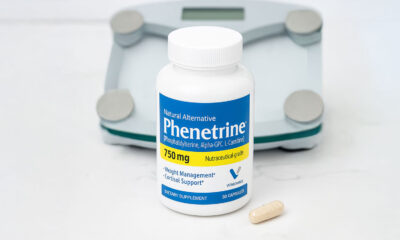Health & Fitness
Need a Same-Day Lice Fix? Why Booking a Salon Could Be Your Best Move
You just got the call: your child has head lice. Maybe it’s right before a birthday party, school trip, or family gathering. You rush to the store, buy lice shampoo, and hope for the best—but it doesn’t work. The lice are still there, and now you’re stressed, confused, and out of time.
This is where a lice removal salon can be a game-changer.
When you need same-day lice treatment, professional salons offer fast, reliable, and chemical-free options that home remedies often can’t. They’re equipped with trained staff, proper tools, and a child-friendly environment that gets the job done right—the first time.
Why Store-Bought Lice Treatments Often Fail
Super Lice Are Tougher Than You Think
Most over-the-counter lice shampoos use permethrin or pyrethrin, but studies show that many lice—known as super lice—have built resistance to these ingredients. That means even after you follow all the steps, lice may still survive and keep spreading.
Nits Are Hard to See and Even Harder to Remove
Lice eggs (nits) cling tightly to hair strands and are easy to miss. If you leave just a few behind, the whole infestation can restart in days. Without special combs and magnifying tools, getting every nit at home is nearly impossible.
What Lice Removal Salons Do Differently
Professional Tools Designed to Eliminate Lice
Lice salons use medical-grade metal combs, enzymatic lice sprays, and magnifying lights to ensure every single bug and nit is removed. These tools are far more effective than anything in a drugstore kit.
Step-by-Step Process That Covers Everything
Here’s what typically happens in a salon visit:
- Full head check using magnification
- Section-by-section comb-out with precision tools
- Application of safe, non-toxic lice removal solutions
- Final inspection to confirm a lice-free scalp
- Optional follow-up advice and aftercare guidance
It’s fast, thorough, and done by trained professionals who know what to look for.
When You Need a Same-Day Solution, Time Matters
School Policies Require Fast Action
Many schools follow a “no-nit” policy, which means your child can’t return to class until all lice and eggs are gone. Lice salons often offer same-day appointments, helping your child get clearance to return to school the next day—sometimes even the same afternoon.
Special Events and Travel Plans Can’t Wait
If you’re heading out of town or preparing for a big event, dealing with lice can feel like a nightmare. Salons handle emergency lice removal with speed and precision, so you can move forward without stress or embarrassment.
The Hidden Benefits of Going to a Lice Salon
Less Stress for Parents and Kids
Let’s face it—home lice removal can turn into a multi-hour ordeal. Kids get fussy. Parents get frustrated. Salons take that burden off your shoulders with quick, calm, and efficient service in a distraction-free environment.
Lice Experts Know What You Might Miss
Many parents don’t know the difference between dandruff and nits—or between dead and live lice. Lice technicians have experience identifying exactly what’s on the scalp, so they don’t waste time guessing.
Why Same-Day Salon Visits Offer More Than Just Speed
Peace of Mind With One Appointment
When you leave a lice salon, you walk out 100% lice-free. No waiting days to see if a treatment worked. No crossing your fingers and hoping it’s over. That peace of mind is worth every minute saved.
Follow-Up Options and Support
Many salons offer optional follow-up checks within 7–10 days to make sure nothing was missed. Some even provide clearance certificates for schools and camps, giving parents confidence and official documentation.
What to Look for in a Good Lice Removal Salon
Certified Technicians and Clean Tools
Make sure your chosen salon has trained lice specialists who follow strict hygiene protocols, including sanitizing combs between clients and using fresh supplies.
Transparent Pricing and No Gimmicks
A professional salon will offer clear pricing, often by the hour or hair length. Be wary of places that promise overnight results with mystery sprays or upsell unnecessary products.
In-Home vs. In-Salon: Which Is Right for You?
Salons Offer Controlled, Distraction-Free Settings
In-salon treatments mean dedicated lighting, better tools, and focus. It’s often quicker, especially for long hair or severe cases, because technicians aren’t juggling distractions from home environments.
In-Home Services Add Comfort and Convenience
If your child has sensory issues, anxiety, or mobility challenges, some lice services offer in-home appointments. These allow the treatment to happen in a familiar space without added travel stress.
Both options can be effective—the key is choosing what’s best for your family’s needs.
Conclusion: Fast, Safe, and Effective—All in One Visit
Lice can feel like a crisis. But with professional lice removal salons, help is just one appointment away.
When you’re short on time, tired of failed home treatments, or simply want the job done right, booking a same-day salon visit could be your best move. You’ll get expert care, thorough treatment, and fast relief—without the guesswork or stress.
Don’t let lice ruin your day. Get the help you need, when you need it most, and walk out with peace of mind.
Disclaimer: This article is for informational purposes only and should not be taken as medical advice. Please consult your doctor before following any health tips.
Health & Fitness
Gastric Bypass Abroad: Combining Travel With Life-Changing Weight Loss
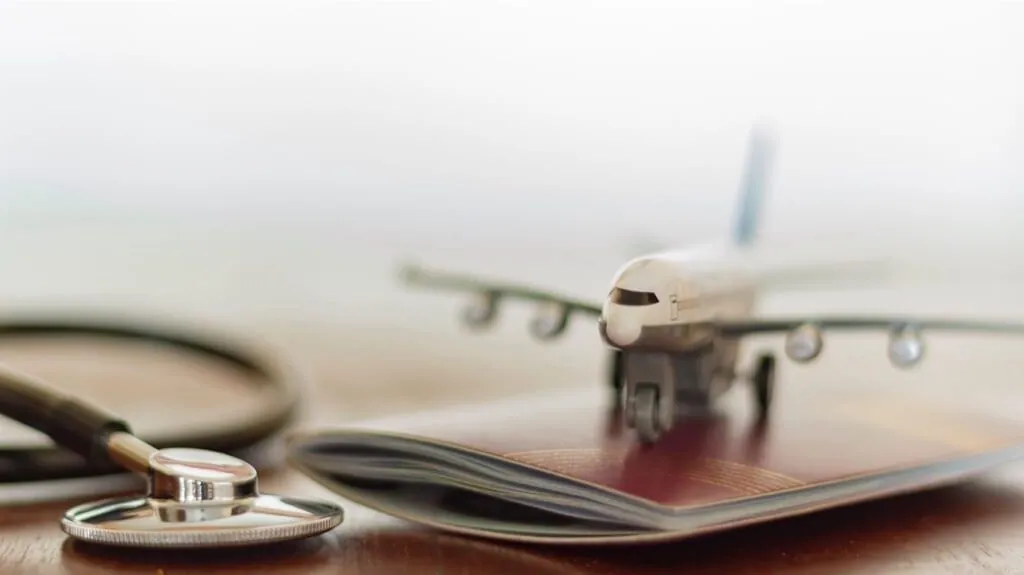
Gastric bypass is one of the most popular procedures recommended for people suffering from obesity. With the mobility of patients, shifts of patients for gastric bypass surgery abroad is becoming more common. Gastric bypass abroad is meant for people seeking cost-effective, professional gastric bypass abroad while incorporating the surgery with leisure travel. This is the first trend in the mobility of patients. This trend is the desire of patients to combine improving their health with travel and leisure.
Exploring the Gastrical Bypass Abroad
Patients seeking gastric bypass surgery abroad gain the benefit of affordable world-class treatment as opposed to local overpriced, under-delivered treatment. Over the last few years, several countries have been recognized as world-class hospitals and clinics for providing medical care. Most countries offer world-class hospitals, experienced medical staff, and attend to state-of-the-art medical technology, These clinics and hospitals attain their patients through successful pre-op and post-op active care and personalized post-op diet care. This level of care is especially helpful to patients as it allows them to concentrate on their recovery while integrating with their new environment and culture.
Affordability and Accessibility for a Healthier Future
Saving money is one of the main advantages of getting gastric bypass in countries like Mexico, Turkey, Thailand, and India, where they offer quality healthcare at a much lower price than in Western countries. The lower price packages often include more than medical care, such as accommodation, transportation, and aftercare, which make the whole process much more accessible and convenient. People who previously could not afford the surgery are given the opportunity to take control of their health and make the necessary life changes.
Quality Care and International Standards
There are understandable concerns about safety and quality when it comes to international surgeries, but many overseas hospitals are now meeting and, in some cases, even exceeding international standards. The accredited clinics have well-trained and seasoned staff which guarantees quality care. Moreover, many facilities-and surgical centres in the world have techniques and equipment comparable to the leading hospitals in the US and Europe. The increasing number of patients for gastric bypass abroad is proof that these clinics offer a professional medical experience with a focus on patient safety and the desired outcomes.
The Emotional and Lifestyle Transformation
Gastric bypass surgery changes your body and mind and can considerably alter your quality of life. Patients appreciate losing considerable weight and noted improvements in mobility and self-confidence. There is something special about getting this surgery abroad. Sometimes it gives patients the opportunity to step away from their routine and surroundings to focus on personal changes. A different environment can boost recovery, and patients appreciate the emotional improvements it can bring to the overall recovery process.
Combining Travel with Recovery and Relaxation
Gastric bypass abroad can routine-ally serve as an escape in itself. Patients can strategically schedule their surgeries to take advantage of post-operative recovery time at many hospitals positioned in appealing geographic areas. Patients can spend recovery time on tropical beaches and at mountain retreats which are soothing to the patients psychologically and emotionally post-surgery. Patients are rarely offered the opportunity to return home to their lives post-surgery, and feel rejuvenated, refreshed, and inspired.
The Importance of Gastric Bypass Abroad
A gastric bypass abroad serves a purpose that is beyond essential—the transforming and life-saving procedure is made accessible and affordable. It removes geographical and financial constraints and offers individuals a healthier life. It is a medical procedure that on a larger scale offers individuals an opportunity for self-exploration and restoration far away from home. Such a choice is a clear indicator of an individual’s willingness to reclaim their health, mental fitness, and life.
Closing Words
Gastric bypass abroad is a unique convergence of cutting-edge modern medicine, personal change, and cost-effectiveness. Patients gain a healthier outlook on life, and at the same time, are afforded the opportunity to tour different geographies. This service option is constantly becoming popular among border-crossing patients, and for good reason—its life-altering benefits. The modern facilities are staffed with world-class caregivers and provide complete medical attention. The option offers patients much more than the expected side-effects of a weight-loss operation, improving their mental and emotional states with more energy and a wholly new outlook on life.
Health & Fitness
Phenetrine Reviews (Amazing Results or Just Marketing?)
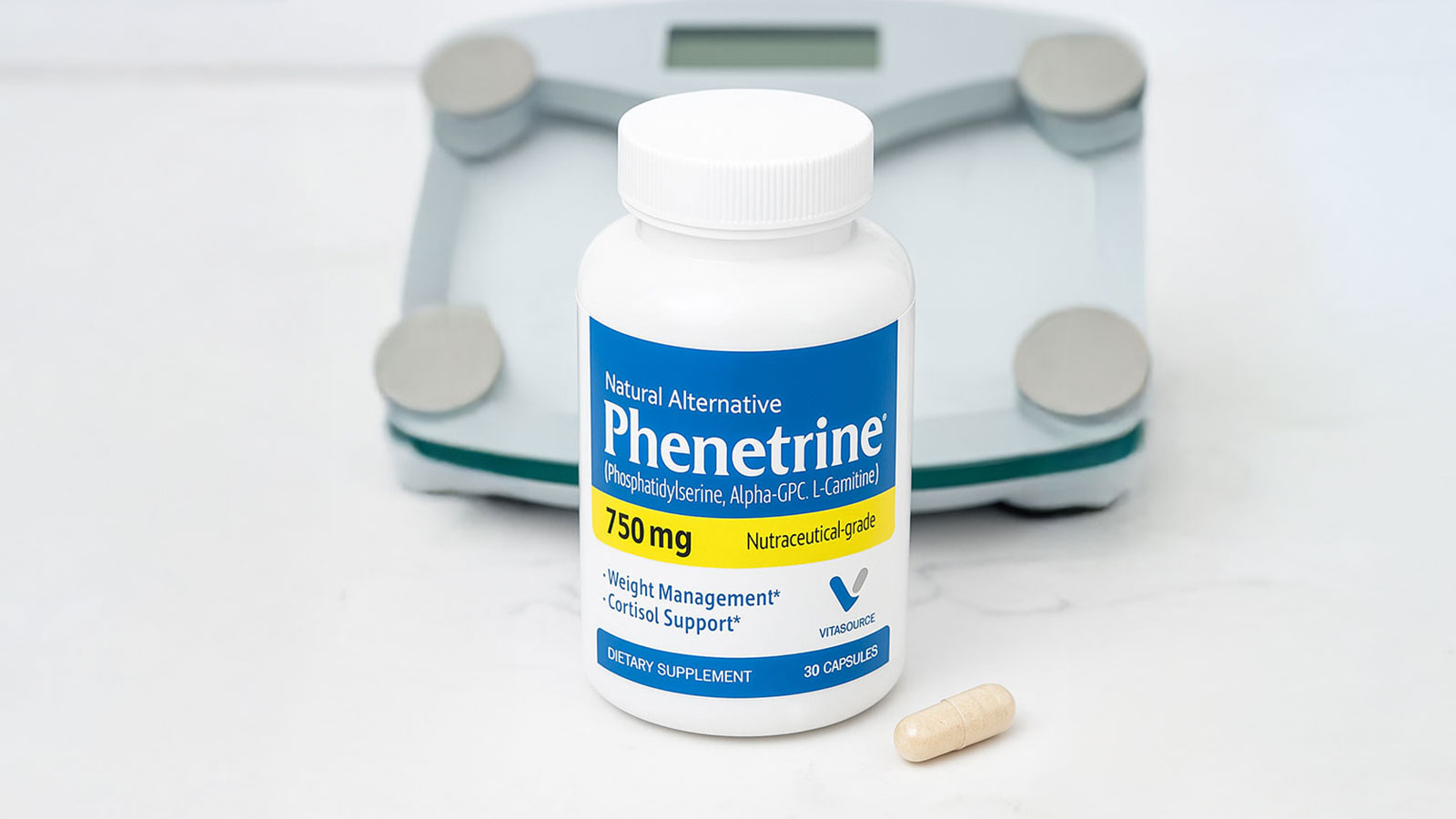
Discover everything about Phenetrine directly from Vitasource Health.
I wasn’t looking for a new supplement or anything special. I just kept seeing the name Phenetrine pop up on Facebook and X (Twitter). At first, I ignored it. Then I started noticing something strange, every post about Phenetrine sounded kind of… real.
No big promises. No ads. Just regular people talking about how they felt calmer, ate less junk, and finally stopped snacking from stress.
That’s when I got curious and started reading more.
What People Were Saying
“It seriously stopped my stress eating lol”
Not even kidding, I used to grab snacks anytime I got anxious. Been taking Phenetrine for 3 weeks and that urge is just… gone. I still eat, but it’s like my brain finally chilled out.
User Name: Alyssa V.
Source: Facebook
“No crash, no crazy energy, just calm focus”
You know that 3pm crash where you want sugar so bad? Yeah, that’s gone. I’m down like 12 pounds already and I feel normal for once.
User Name: Derrick L.
Source: TikTok
“It doesn’t even feel like a diet thing”
It’s weird, it’s not like I’m forcing myself to eat less. I just don’t want junk food. I eat slower, get full faster, and haven’t been moody once.
User Name: Camila R.
Source: X
“Finally seeing the scale move 😭”
Nothing worked for me for years. Six weeks on this and I’m down 15 lbs. No crash, no guilt, just progress that actually feels real.
User Name: Vanessa C.
Source: Facebook
“Bro I don’t snack anymore and idk how”
I swear I used to live in the pantry after work. Now I come home, eat dinner, and I’m good. It’s like my cravings just disappeared.
User Name: Riley T.
Source: TikTok
“It’s like my mood and appetite finally got along”
Before Phenetrine, I’d be super anxious and end up overeating. Now I feel calm, and I actually notice when I’m full. Lost 10 lbs without changing much.
User Name: Natalie M.
Source: Facebook
“Subtle but legit difference”
Didn’t notice right away but after a week I realized, no afternoon snacking, no brain fog. Down 8 pounds and not fighting myself anymore.
User Name: Jasmine K.
Source: X
“My focus is back and I’m losing weight??”
I didn’t expect this combo but it’s kinda amazing. I feel more clear-headed, not obsessed with food, and the scale finally moved 13 lbs down.
User Name: Caleb S.
Source: TikTok
“Not starving myself for once 🙌”
I eat real meals, I’m not cranky, and my cravings just stopped being a thing. 11 pounds gone and it doesn’t feel forced at all.
User Name: Brooke F.
Source: Facebook
“Actually works, I’m shocked”
No weird side effects, no jitters, just steady weight coming off. 17 pounds down and I feel like my old self again.
User Name: Megan L.
Source: X
What Phenetrine Actually Does
From what I read, Phenetrine isn’t a diet pill or a caffeine boost. It works by helping your body handle stress and hunger the natural way.
Here’s what makes it different:
- Balances cortisol, Cortisol is a stress hormone that can make you crave food, especially sweets and carbs. Phenetrine helps keep it in a normal range.
- Keeps blood sugar steady, That means no more sugar highs and afternoon crashes.
- Activates AMPK, This is something in your body that helps you use fat for energy instead of storing it.
People said this mix helped them stay calm and eat when they were actually hungry, not when they were just tired or stressed.
What’s Inside Phenetrine
When I looked up the ingredients, they sounded pretty science-y, but they all do simple things that make sense.
- Phosphatidylserine – helps control stress so you don’t crave comfort food.
- Alpha GPC – keeps your blood sugar and focus steady.
- L-Carnitine HCL – helps your body use stored fat for energy.
- L-Glutamine – keeps sugar cravings low and supports healthy digestion.
None of these are strong stimulants, and everyone online said Phenetrine doesn’t make you feel wired or shaky.
Why It Stood Out
What made Phenetrine stand out to me wasn’t the usual marketing stuff.
It wasn’t a sponsored post, or a flashy transformation video, or a too-perfect testimonial.
It was just normal people, real users, talking about how it quietly made their lives easier.
They weren’t hyping it up or trying to sell anything.
Most of the comments sounded like small wins that actually mattered in real life.
Not “I lost 30 pounds in a week!” but things like:
“I don’t think about food all the time anymore.”
“It’s easier to eat like a normal person.”
“I feel calm, and that changes everything.”
The more I read, the more I realized no one was celebrating massive, overnight results.
They were celebrating control.
That feeling of being steady again, not battling cravings, not crashing mid-afternoon, not feeling like every meal was a test.
People weren’t describing a “miracle pill.”
They were describing relief.
That’s what really hit me.
Phenetrine wasn’t being talked about like some hardcore fat burner or appetite killer.
It came up in conversations about stress, burnout, and wanting to feel more in tune with your own body again.
Everyone kept saying the same kind of thing, that it just made life feel more manageable.
The cravings faded, the guilt quieted down, and food didn’t feel like such a fight anymore.
And that’s when I realized Phenetrine wasn’t about eating less.
It was about helping your body calm down, to stop overreacting to stress and let everything balance out naturally.
That’s the part that made me stop scrolling and actually pay attention.
What I Took Away
The more I read, the more it made sense: cravings aren’t about willpower, they’re about balance.
When your stress hormones calm down and your blood sugar stays steady, your brain stops asking for snacks all day.
That’s what Phenetrine seems to do for people. It helps bring things back into balance so food stops feeling like the enemy.
I haven’t seen anything else online get that kind of real, honest feedback. It’s not flashy, it’s just people finally feeling normal again.
And honestly, that’s what makes Phenetrine so interesting.
Health & Fitness
Is Reverse Osmosis Water Good for You? A Comprehensive Guide Covering Technology, Health Benefits, Concerns, Comparisons, Economic & Environmental Impacts, Scientific Research, and Maintenance Tips
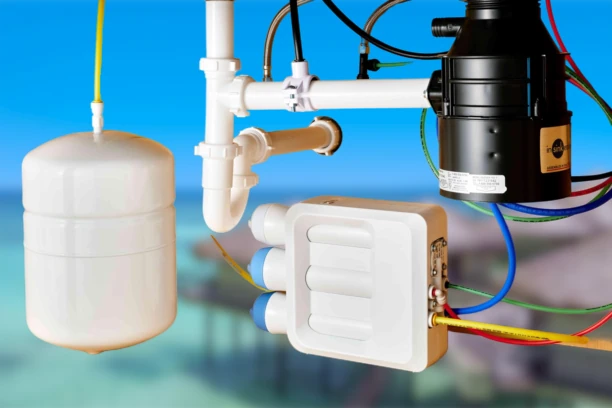
Introduction
The demand for Reverse Osmosis water continues to increase because people worry about deteriorating water quality standards. Household customers across the nation want to understand the health benefits of reverse osmosis water. A semipermeable membrane acts during water purification to extract dissolved salts together with chemicals and bacteria thereby producing highly clean water. People choose alternative water sources which offer pure drinking water that also enhances their beverage experience because municipal water quality continues to decline through contamination.
Due to its evident advantages the use of reverse osmosis technology has led to various points of contention. The process of removing pollutants through RO technology generates pollutant-free water yet experts maintain that this elimination removes naturally present water minerals. Supporters emphasize the presence of remineralization filters in modern reverse osmosis systems which remedies this particular problem. The entire body of information regarding RO systems and their health effects alongside environmental impact and cost evaluation together with maintenance advice will be explored in this article.
The guide simplifies difficult subject matter across several paragraphs to help users decide if reverse osmosis water suits their health needs.
Understanding Reverse Osmosis Technology
The water purification method called reverse osmosis enables semi-permeable membranes to filter contaminants from water. Clean water passes through narrow pores when exposed to high pressure pressure until pollutants remain trapped inside. The modern purification systems using advanced technology drive dissolved salts and heavy metals and organic compounds from water to deliver both clear and safe drinking water results.
The water purification procedure begins with pre-filtration for the removal of sediments and big particles. The RO membrane functions as a protective filter to block minute pollutants because water flows through it at this stage. The reverse osmosis system provides extraordinary benefits to locations where water pollution occurs from industrial waste or outdated water systems. The main benefit of reverse osmosis technology results from its ability to provide steady purified water production that removes nearly all dangerous substances.
The modern reverse osmosis filtration technology now includes mineral restoration elements to replenish the naturally found minerals which the process removes from water. The modern innovation solves a key criticism about demineralized water by offering mineral replacement in filtered water. Today’s RO technology enables users to obtain water that contains no dangerous pollutants along with essential minerals.
Users can operate and maintain the technology system using simple methods. Maintaining regular inspection protocols and changing filters on time combined with accurate setup of the system leads to peak performance. Learning about reverse osmosis functionality helps customers select appropriate systems that resolve their individual water quality problems.
Health Benefits of Reverse Osmosis Water
Health experts need to evaluate numerous advantages that reverse osmosis water provides for human health when addressing its quality benefits for human consumption. Reverse Osmosis water features multiple advantages because it effectively eliminates heavy metals, chlorine along with pesticides and particular bacteria and viruses from drinking water. The extensive purification process allows users to feel at ease about their drinking water particularly if they live somewhere, where water quality issues exist.
The purification process through reverse osmosis allows water to become better for hydration which leads to improved health benefits. Low concentrations of impurities and toxic elements create tastier crystal-clear water which people tend to consume in greater amounts. People need sufficient water intake for proper digestive functions and absorption of nutrients and healthy skin maintenance together with multiple health advantages. IANA water purification involves chemical elimination which reduces the danger of developing cardiovascular problems along with other toxin-related health conditions in the long term.
Some critics have pointed out the removal of beneficial minerals from drinking water but present-day reverse osmosis systems use mineral addition stages. This feature brings back essential minerals such as calcium and magnesium to support both the great taste of purified water and nutritional balance. The capability to tailor mineral content allows RO water to serve as an excellent health-oriented choice.
Reverse osmosis water gives families the ability to make proactive health-based decisions through its consistent and safe water supply. People who care about their health and safety see reverse osmosis as a desirable solution because of its safety benefits especially when water contamination is known to be present in their region.
Potential Concerns and Considerations
The many benefits of reverse osmosis water need to be considered along with important biological risks when determining its health impact. Natural water minerals often disappear when using reverse osmosis water filtration systems as one of the main problems. The strong filtering abilities of reverse osmosis remove impurities effectively yet simultaneously eliminate necessary mineral compounds calcium and magnesium from water.
The continuous drinking of demineralized water potentially leads to nutritional deficiencies according to expert opinion when dietary compensation for mineral losses is inadequate. Roughly modern reverse osmosis water filtration systems now include remineralization stages to recover essential natural water components that had been eliminated from the process. Through this technology users obtain both the purity advantages and nutritional value they need.
Reverse osmosis systems require evaluation of their environmental effects on the environment. The typical functioning of reverse osmosis produces wastewater which poses problems in water-conservation regions. Manufacturers constantly strive to enhance water efficiency because they wish to minimize product loss.
Some consumers face concerns about both the expenses needed to install the system and maintain regular operation. Regular changes of filter components and scheduled system evaluations ensure your system performs at its best level. The complete advantages of using reverse osmosis water systems for better tasting water plus better safety features and extensive filtration mechanisms usually create more value in comparison to possible negative aspects.
Each user needs to evaluate these aspects of reverse osmosis water systems according to their unique needs. Knowledge of both positive and negative aspects enables you to decide whether an RO system should be installed in your home. The evaluation process must be thorough because it helps to ensure your water purification method aligns with health requirements as well as environmental standards.
Comparison with Alternative Filtration Methods
The argument about reverse osmosis water safety benefits from a comparison between RO technology and other water purification approaches. Reverse osmosis systems function differently than simple activated carbon filters because they have the capability to remove a wide range of contaminants from the water stream. The process eliminates chemical impurities together with both dissolved solids and heavy metals and microorganisms.
Each water purification system using activated carbon or UV purification brings different advantages to filtration. The efficiency of UV systems at inactivating bacteria and viruses does not extend to neutralizing chemical contaminants. The holistic method of hazard protection lies with reverse osmosis which eliminates microbial and chemical contaminants entirely. Reverse osmosis provides an extensive solution for homes dealing with multiple water quality problems.
Water distillation represents another method for impurity extraction through boiling and condensation processes. The distillation process remains effective yet requires high energy consumption and may lose beneficial minerals during the operation. Reverse osmosis proves to be the preferred solution because it provides both high energy efficiency and superior-water purity for consumers.
Reverse osmosis systems differentiate themselves from alternative methods because customers can personalize their systems through custom components. The modern RO system includes customizable features such as essential mineral addition and water pH management which make these systems very difficult to replicate. Reverse Osmosis reactors provide users customizable water experiences that make numerous people favor RO water both as an effective health choice and the top choice in problematic water supplies.
Determining the boundary and advantages of each purification technique rises as an essential priority. The comparative assessment allows consumers to find a filtration system which matches their requirements so their chosen solution provides security combined with proper hydration.
Economic and Environmental Implications
The evaluation of reverse osmosis water safety requires analysis of technological economic costs together with environmental factors. As a financial decision reverse osmosis systems act as long-term money savers for the environment. Reverse osmosis filtration requires initial setup expenses along with maintenance costs that exceed traditional methods but consumers typically find the continuing savings on bottled water and better water quality to be sufficient reasons for their investment.
Users throughout the years experience financial benefits particularly in situations where poor water quality requires them to get their water from other sources. The better quality water along with improved safety reduces barriers to drink water that leads to increased consumption and produces health benefits. Reverse osmosis systems decrease dependence on single-use plastic bottles which assists households to reduce both their expenses and their waste management expenses.
Reverse osmosis technology exists as a dual system for environmental purposes. The reverse osmosis technology helps both by decreasing plastic waste due to its ability to provide clean tap water. The production method naturally generates wastewater that environmental users progressively concern about. Research efforts from manufacturers continue to develop improved water systems that manage water waste to maintain filtration standards.
Reverse osmosis systems create environmental impact through the manufacturing processes along with disposal methods involved in component lifecycle management. Green practices have started becoming standard among companies who recycle their filters while making systems more energy-efficient at design stage. The innovations play an essential role to minimize the total environmental impacts throughout reverse osmosis systems.
The key requirement involves achieving both economic savings and environmental responsibility. People need to consider both economic aspects and environmental impacts when determining whether an RO system suits their household requirements. The constant improvements in reverse osmosis technology increase its popularity as a secure hydration method that provides economical while environmentally sustainable water purification.
Scientific Research and Evidence on Reverse Osmosis
Through scientific investigation people can determine whether reverse osmosis water provides health benefits to humans. Multiple scientific investigations have shown that reverse osmosis systems effectively remove waterborne pollutants based on their results. The research shows that RO technology effectively eliminates heavy metals together with nitrates and tiny microscopic organisms in water.
Multiple investigations demonstrate how reverse osmosis proves exceptionally effective in creating water quality results better than health and safety requirements. Multiple studies confirm RO technology removes water contaminants to such low concentrations that exceed international water quality standards. Reverse osmosis stands as an essential solution to protect communities requiring assurance about their drinking water quality.
Researchers have directed scientific focus toward examining the debate related to mineral extraction from water. Except for depleting water of naturally occurring minerals, multiple scientific findings show that mineral loss from reverse osmosis does not lead to adverse health problems. The modern reverse osmosis systems incorporate remineralization features for reintroducing calcium and magnesium to achieve a balance between pure water and nutritional value.
System maintenance with filter replacement occurs regularly to maintain proper performance according to the research findings. Research on drinking reverse osmosis water continues to develop our knowledge about its lasting effects on human health. Several research findings have convinced numerous consumers that reverse osmosis can operate effectively and safely through proper management when used daily.
Scientific validation of reverse osmosis technology has resulted in its acceptance as a reliable solution which handles contemporary water quality problems combined with health risks thus providing a sound research basis for its growing market adoption.
Practical Maintenance and Usage Tips
Complete utilization of reverse osmosis water depends on mastering essential maintenance practices and usage techniques. Performance and safety of your RO system require optimal operations throughout its lifespan. Regular replacement of filters together with routine examination of the RO membrane system starts routine maintenance procedures. The regular maintenance of small tasks helps protect your RO system from breakdowns and produces water that stays pure throughout.
Users need to follow manufacturer guidelines to determine their system maintenance protocols. Implementing daily, weekly and monthly check routines enables better handling of the maintenance tasks. Through visual observation everyday inspection can detect fluid leakage and pressure fluctuation but water quality assessment occurs each week. A detailed assessment of the filter condition and membrane state must occur every monthly period.
Periodic testing of your water requires the use of home testing kits. The water testing kits available for home use show both contaminant measurements and the operational status of your RO system. A decrease in water quality suggests that you should perform immediate maintenance or change the filters.
A remineralization filter installation becomes essential for users who want to keep beneficial minerals present in their water supply. A remineralization filter addition protects important diet nutrients which remain despite complete water purification procedures.
The basic requirement for successful RO system operation depends on correct installation combined with the proper setup of the system. Follow all security protocol to ensure proper connections while installing the system per manufacturer guidelines. Taking proper steps in reverse osmosis water implementation will optimize the benefits and ensure your family receives continuous clean water supplies.
Endnote
To determine if reverse osmosis water benefits human health you must review its technical processes combined with its health benefits as well as economic impact and environmental impact. Reverse osmosis creates highly pure water by removing dangerous pollutants from water but modern systems resolve mineral depletion issues through improved remineralization methods. The reliability of reverse osmosis systems emerges when you assess filtration alternatives and study scientific data and maintain them according to recognized procedures.
Hence, the choice of implementing an RO system requires evaluation of personal health requirements in addition to evaluation of environmental factors. Technological progress combined with research developments makes reverse osmosis better at providing balanced access to safe clean water that also delivers adequate nutrition.
FAQs
What is the difference between RO water and bottled water?
Reverse osmosis water originates from filtered tap water after it passes through a semi-permeable membrane which collects pollutants whereas bottled water derives from various sources with uncertain filtration methods. Reverse osmosis system maintains cost-effective and reliable quality of water output when its maintenance standards are met but bottled water quality remains unpredictable depending on production brands or sourcing areas of supply.
Does reverse osmosis water lack essential minerals?
Modern RO systems perform added remineralization stages to replace calcium and magnesium which together with numerous impurities get filtered out during the process. A healthy and balanced diet provides sufficient minerals so that removing them through filtration does not affect health negatively.
How often should I replace filters in my RO system?
Most experts advise replacing both pre-filters and RO membrane from 6 to 12 months based on system usage and your source water quality. System maintenance in line with manufacturer instructions guarantees the delivery of high-quality purified water from the system.
Is reverse osmosis water acidic and can it affect my health?
Reverse osmosis water becomes slightly acidic because buffering minerals are removed from the water. The implementation of remineralization filters in many systems allows them to return the water pH level to a neutral balance. RO water becomes safe for everyday drinking when the system receives proper adjustment measures which ensure no major health concerns.
How does remineralization work in modern RO systems?
The addition of vital minerals is performed through remineralization following RO filtration processes. A post-filter introduces small amounts of calcium along with magnesium and nutritional elements to restore taste quality while maintaining water purity.
What are the environmental impacts of using an RO system?
The wastewater output of reverse osmosis filtration has been minimized through improved design of contemporary units which enhance their water efficiency. Reverse osmosis equipment contributes to plastic waste reduction through its substitute of bottled water while generating environmental waste that needs attention.
Can I install an RO system myself or should I hire a professional?
Most Reverse Osmosis systems include straightforward installation tools that come with detailed directions for self-installation purposes. Hiring a professional should be considered when installing the system since it provides assurance for proper setup and optimal system function.
How do I test the quality of my reverse osmosis water?
The quality of water can be checked through home testing kits to identify contaminants and pH while measuring mineral content or by dispatching samples to approved laboratories. Your RO system’s correct operation and safe water quality for drinking can be confirmed through regular testing.
Also read: https://theusacorner.com/how-many-pints-in-a-gallon/
Health & Fitness
Exploring the Cold Yogurt Drink Crossword: A Complete Guide to Origins, Techniques, Modern Trends, Community Insights, and FAQs
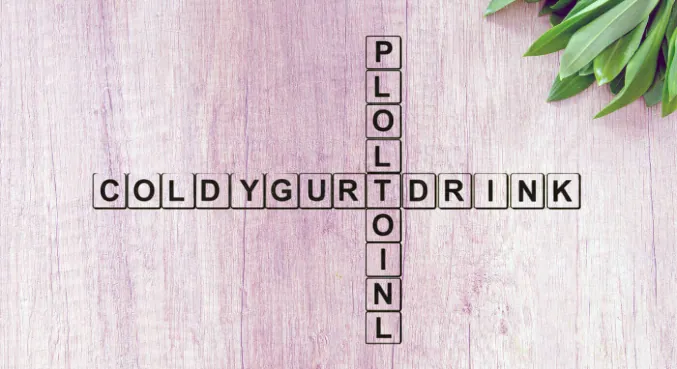
Introduction to the Cold Yogurt Drink Crossword Puzzle
People can experience both mental entertainment from word games and delightful refreshment through the fusion of a cold yogurt drink concept with crossword puzzles. The puzzle requires players to engage with two planes of thought: first by studying the food elements of cold yogurt drinks then deciphering challenging crossword clues. Considering conventional crosswords and regular food and beverage activities this one-of-a-kind puzzle integrates them into a brand new intellectual activity blend.
This puzzle type provides pleasant mental stimulation for people from all age groups at the crossroads where tastiness meets mental prowess. The vocabulary test goes beyond vocabulary knowledge to stimulate imaginative thinking through its modern food theme elements. All clues in the cold yogurt drink crossword have been masterfully designed to create simultaneous literal and allegorical connections to the popular beverage.
Since its creation the puzzle has become a popular attraction for members of digital puzzle communities who exchange solving strategies and review fresh clue techniques while celebrating the playful nature behind its development. The cold yogurt drink crossword provides both beginners and experts a special puzzle-solving experience which freshens the ordinary crossword structure by introducing contemporary and joyful elements. People who desire refreshing intellectual stimulation can find enjoyment from the blend of food culture with wordplay featured in this puzzle game.
The Origins and Cultural Significance of the Cold Yogurt Drink Crossword
The development of cold yogurt drink crosswords explores the relationship between food popularity and intellectual games. Historically creative designers experimented with unorthodox subjects at the time to create new theme concepts. Letting a well-known beverage be part of the crossword puzzle framework became an innovative idea which immediately fascinated fans of food and puzzles simultaneously.
People typically think of crosswords as having traditional clues and surface word connections throughout history. As modern consumers started expanding their taste preferences in eating, modern design creators developed the idea to include such culinary trends in puzzle solutions. The refreshing and health-conscious yogurt beverage functioned as the ideal sign of this emerging inventive trend. The infusion of ice drink-related keywords about texture and taste and cultural meaning into standard crossword elements resulted in multifaceted puzzles which provided both health benefits and mental stimulation.
Through the span of years the sudoku of cold yogurt beverage has developed into a vital cultural puzzle. The current puzzle creation shows artistic elements from both culinary and verbal dynamics which draws wide-ranging audiences. Puzzle Makers admire that the crosswords embody modern trends by equally championing wellbeing through taste and mental intelligence. The rising popularity of this distinctive puzzle demonstrates how food meets intellectual hobbies within modern society because it represents current trends for combining taste and creativity. Enthusiasts create cultural impact through their active participation in online forums as well as community and blog discussions where they exchange experiences and solving techniques.
Techniques and Strategies for Solving the Cold Yogurt Drink Crossword Puzzle
The solution of cold yogurt drink crosswords demands methodical deduction along with mental innovation. Players use different methods to follow clues which mix food terminology with word riddles. The effective technique starts with thorough reading of every clue. The puzzle uses descriptive language to describe a refreshing drink so solvers can link between the structural drink description along with metaphorical puzzle elements.
The first step for most players involves addressing straightforward clues which specify elements of cold yogurt drinks by describing their components or presentation methods. These points act as starting points to derive more challenging hints that require interpretation. Moving ahead it benefits you to analyze each clue by its separate components. You will understand if the word functions as a pun or metaphor or points to a literal meaning through this method. You can organize your clues by breaking them into categories related to texture, flavor and preparation approach so you maintain clarity while avoiding any subtle indicators.
Friends and online puzzle communities should be used for brainstorming sessions when attempting to solve crossword puzzles. Several parts of working alone can hide meaningful interpretations that become visible when team members discuss and share their analysis. The use of writing tools through apps and handwritten notes functions to create order in your thought process as you compile potential solution possibilities. For successful completion of the cold yogurt drink crossword puzzle you need both analytic thought patterns and creative instinct. The fundamental elements needed to understand cold yogurt drink crosswords are continued effort combined with unconventional thinking.
Modern Innovations and Trends in the Cold Yogurt Drink Crossword Puzzle
The cold yogurt drink crossword format continues to develop according to modern technological advancements and entertainment trends. Modern technology contributes to expanded bookmark management by introducing digital interfaces which enhance the classic crossword experience. Online products from puzzle designers provide real-time commentary and interactive question tips as well as adaptive grid interfaces to crossword solvers. The contemporary added features have led to improved participation and better system access.
Through digital platforms the integration of customization and adaptive difficulty features augmented the process of making puzzles more interactive. Participants who solve the puzzles can set their difficulty settings based on their skill level to match their abilities. Social media serves as a key factor behind the cold yogurt drink crossword’s increased popularity because dedicated communities for creative puzzles facilitate mutual sharing of tips and personal stories together with strategic advice. Constant idea and innovation sharing in the community creates an enriched and improved overall puzzle-solving experience.
Interactive technologies combining augmented reality (AR) features and mobile applications gain more popularity in the market. Several platforms incorporate AR features to display educational elegant facts and fun knowledge about cold yogurt drink ingredients which enriches the overall experience. Technological advancements enhance traditional puzzle-solving while simultaneously creating attractive ways for people to merge their curiosity about cooking with mental exercises. To keep puzzles relevant for each solver designers are developing seasonal variations with different themes that create new and enjoyable experiences.
Conclusion: Reflecting on the Impact and Enjoyment of the Cold Yogurt Drink Crossword
The cold yogurt drink crossword puzzle unites cultural elements with food culture while providing mental stimulation. This new puzzle approach to crosswords has restructured the usual framework by utilizing popular beverage elements to create its puzzle terminology. Beyond mental exercise it has transformed into an event that celebrates contemporary culinary trends and innovative word games which satisfy diverse levels of consumer appetite. Interactive discussions between the puzzle’s community members enable ongoing success through their shared exchange of various perspectives and brainstorming opportunities that benefit its completion process.
The longevity of cold yogurt drink crosswords derives from continuous innovation toward new trends which honors its original concept. The advancement of technology together with modern puzzle design methods allows solvers to discover novel interactive elements in their intellectual challenges. The crossword stands as a dual tribute to knowledge and refreshment through its intelligent framework which continues celebrating cultural advancement. The exceptional cultural meaning together with the sophisticated clue format ensures this distinctive crossword puzzle will stay exciting for numerous years ahead. As a solver of puzzles or someone seeking innovative entertainment options the cold yogurt drink crossword serves both mental stimulation and inner contentment.
FAQs on the Cold Yogurt Drink Crossword
What is the Cold Yogurt Drink Crossword Puzzle?
Players encounter a special word puzzle consisting of culinary and crossword-style gameplay elements that incorporates cold yogurt beverage descriptions. This puzzle implements hint words drawing from yogurt drink refreshments by using both actual components and original word combinations. The crossword format stimulates players to discover linguistic relations among food items and cultural heritage along with mental agility.
How does the Cold Yogurt Drink Crossword differ from conventional crosswords?
This crossword deviates from standard puzzles by combining word-linking questions with elements from beverage and culinary world due to its focus on cold yogurt drink themes. The solving clues need individuals to perform both figurative and literal interpretation simultaneously. The crossword adds sophisticated dimensions to vocabulary practice because it requires participants to study food culture through creative metaphorical expressions.
What techniques can improve solving the Cold Yogurt Drink Crossword?
To succeed at the puzzle you need to work on two components: subdividing the puzzle into smaller sections while recognizing dual meanings in each clue. Solvers gain enhanced speed at solving the puzzles through their ability to detect puns together with metaphors which link food ingredients to standard crossword terminology. Additional enhancements to solving skills can be achieved through brainstorming techniques combined with the practice of note-taking and crossword discussions with enthusiast communities. The method provides better efficiency and enjoyment in the solving process by revealing hidden references to the puzzle.
Are there digital or interactive versions available for the Cold Yogurt Drink Crossword?
Digital innovations enable people to access the crossword for cold yogurt drinks through numerous interactive platforms. The new versions provide users different features that include instant hint guidance combined with adjustable grid dimensions and intelligent challenge adjustments. Mobile apps combined with augmented reality features become popular because they deliver contemporary variants of the classic puzzle experience. The fresh technical enhancements bring new viewers in addition to maintaining the traditional feeling of the puzzle.
How can beginners start with the Cold Yogurt Drink Crossword puzzle?
For starting out beginners need to learn fundamental cooking terms regarding yogurt beverages and standard crossword approaches. It is best to approach easier clues before moving onto more challenging puzzle sections. Users seeking help who join niche forums about yogurt drinks will find the experience highly beneficial. The platforms provide tutorials in addition to sample puzzles along with shared strategies which support newcomers to construct self-confidence and strengthen their problem-solving abilities in an encouraging space.
What cultural significance does the Cold Yogurt Drink Crossword hold?
Modern life exhibits fusion between lifestyle patterns and food culture and intellectual challenges in the cold yogurt drink crossword puzzle. This development represents a change in puzzles which do not only require word identification but also honor current food trends. The incorporation of a widely consumed drink in the puzzle theme establishes an instant connection to numerous people who perceive this as the integration of wellness with flavor while maintaining artistic freedom. Management of the cultural theme has gained appreciation within multiple digital communities and fan groups because of the puzzle’s unique unification of artistic and logical elements.
Where can I find more puzzles or join discussions about the Cold Yogurt Drink Crossword?
Multiple digital platforms, discussion forums and social media communities focus on puzzle themes that include the cold yogurt drink crossword. Websites catering to crossword fans maintain areas where users can submit their puzzles and start content discussions. Digital crossword apps give users an opportunity to share tips through community sections where they can also exchange innovative solving strategies and contribute new clues to the crossword database. Progressing through puzzle communities will give you instant access to vast numbers of exciting puzzles as well as enhanced enjoyment during your solving process.
Also read: https://theusacorner.com/exploring-the-significance-of-feet-in-ballet/

 Pet7 days ago
Pet7 days agoHow Long Do Horses Live? Unlocking the Secrets of the Lifespan of Horses

 Health & Fitness6 days ago
Health & Fitness6 days agoGastric Bypass Abroad: Combining Travel With Life-Changing Weight Loss

 Health & Fitness6 days ago
Health & Fitness6 days agoPhenetrine Reviews (Amazing Results or Just Marketing?)

 Blog6 days ago
Blog6 days agoExploring Larnaca: The Best Sightseeing Choices by the Sea










